In order to deeply implement President Xi Jinping's ecological civilization ideology and his series of instructions on ecological protection and high-quality development in the Yellow River Basin, as well as to construct an ecological barrier and promote high-quality development in the Yellow River Basin, the "Yellow River Source Conservation Area Comprehensive Scientific Investigation Team," led by Professor Gou Xiaohua, Vice President of Lanzhou University and Dean of the College of Earth and Environmental Sciences, conducted a comprehensive scientific investigation in the upstream Yellow River and surrounding source conservation areas from June 16 to 29. They also held discussions with local government departments and relevant organizations.
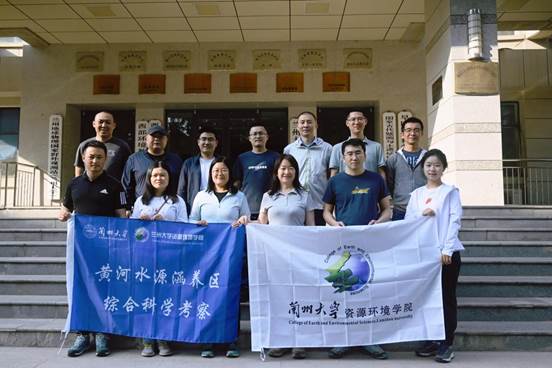
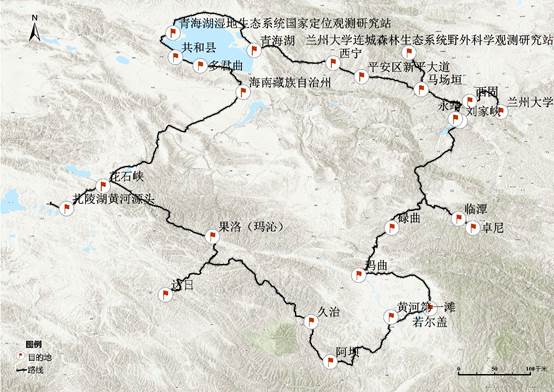
On June 16, Gou Xiaohua and his team departed from Lanzhou and successively arrived at Ping'an District in Haidong City, Haiyan County in Haibei Prefecture, Gonghe County and Xinghai County in Hainan Prefecture, Mado County, Maqin County, Dari County, and Jiuzhi County in Golog Prefecture, Aba County and Ruoergai County in Aba Prefecture, Maqu County, Luqu County, and Zhuoni County in Gannan Prefecture, Yongjing County in Lanzhou City, and Yongdeng County in Gansu Province, covering a total distance of approximately 3,000 kilometers. They conducted a 15-day comprehensive scientific investigation on climate change, hydrology and water resources, ecological environment, and regional sustainable development in the Hexi Corridor, Qinghai Lake area, Gonghe Basin, Yellow River Source Region, Animaqing Mountain, Ruoergai Wetland, Gannan Plateau, and the eastern outflow area of the Qilian Mountains. Along the way, they collected a large number of water, soil, and tree ring samples, laying the foundation for subsequent research work. They also held in-depth discussions on ecological environment protection and regional sustainable development with the relevant departments of the Golog Tibetan Autonomous Prefecture, Ruoergai County, Maqu County, Luqu County, and the management center of the Gansu Tao River National Nature Reserve, reaching preliminary cooperation intentions.
On June 16-17, the scientific expedition team conducted investigations in the Hexi Corridor and Qinghai Lake. During the investigation, Professor Li Yu, Deputy Dean of the College of Earth and Environmental Sciences, provided a detailed introduction to the research progress of Lanzhou University in climate change, ecological evolution, and cultural evolution in the Hexi Corridor and Qinghai Lake area. On the afternoon of June 17, Gou Xiaohua and his team conducted research at the Qinghai Lake Wetland Ecosystem National Observation Research Station.
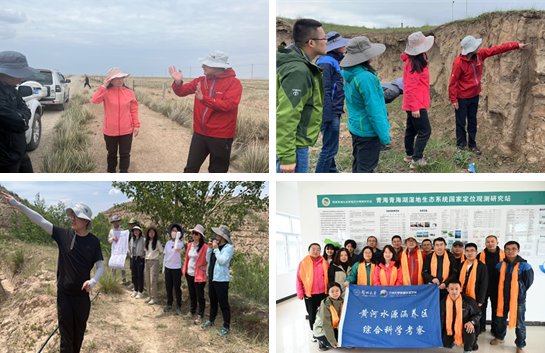
On June 18, the scientific expedition team conducted investigations in the Yellow River Source Region, focusing on permafrost, ecosystem carbon cycling, and ecological and environmental changes. At an altitude of 4,300 meters in Mado County, Professor Mou Cuicui from Lanzhou University introduced the characteristics of permafrost degradation landforms and the development of thermokarst ponds in the Yellow River Source Region, clarifying the spatiotemporal characteristics of permafrost changes in the Yellow River Source Region, the underground ice reserves, water resource contribution potential, and the response of alpine grassland carbon cycling to permafrost degradation. In the Eling Lake area at an altitude of 4,600 meters, the scientific expedition team investigated water resources and the ecological environment in the Yellow River Source Region.
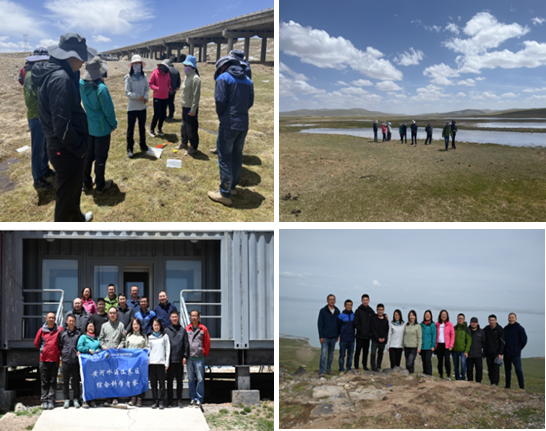
On June 19, the scientific expedition team visited the precipitation gradient observation site in the Yellow River Source Region and conducted a close-up investigation of theVagliagang Glacier and the forest ecosystem of the Animaqing Mountain. At the Vagliagang Glacier, Professor Wang Xuejia and Researcher Chen Yongle introduced the climate conditions, meteorological observations, and the current status of glaciers near Maqinggang. At the Animaqing Mountain, Associate Researcher Gao Linlin introduced the distribution of forest ecosystems in the Yellow River Source Region and the research progress of Lanzhou University on the response of forest ecosystems to climate change in the region. Tree core samples were also collected. During the discussion meeting with the government of the Golog Tibetan Autonomous Prefecture, Gou Xiaohua expressed that the research teams of Lanzhou University actively respond to and implement President Xi Jinping's call for scientists to write research papers on the land of the motherland. They are committed to serving local economic and social development and addressing the challenges and difficulties in ecological restoration, water resource protection, grassland degradation, and environmental governance, thereby contributing to regional high-quality development. Preliminary consensus has been reached on cooperation in ecological protection, climate change, black soil beach management, meadow degradation, permafrost monitoring, grassland and forest carbon sinks, and ecological value assessment.
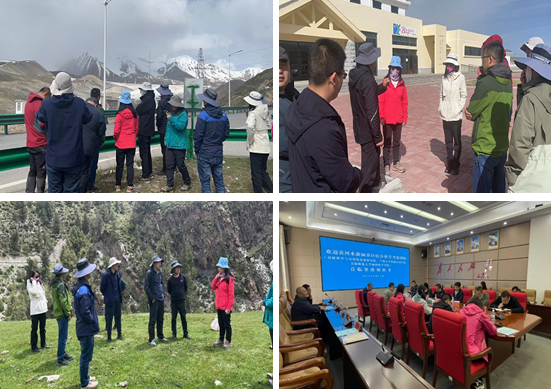
On June 20, the scientific expedition team investigated the degradation and restoration status of alpine grasslands. In Maqin County, Researcher Peng Fei from the Northwest Institute of Eco-Environment and Resources of the Chinese Academy of Sciences provided a detailed introduction to the process, mechanism, and restoration measures of grassland degradation. In Dari County, the team visited a demonstration site for the restoration of black soil beaches and received an introduction from the Forestry and Grassland Bureau of Dari County regarding the situation of black soil beach management. They also surveyed the degradation status of high-altitude mountain grasslands along the way and discussed possible influencing factors and formation mechanisms.
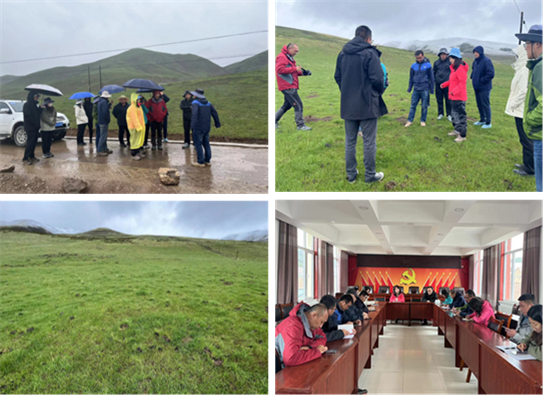
On June 21, the scientific expedition team conducted investigations in Nianbaoyuze Geopark and Ruoergai Wetland. In Nianbaoyuze Geopark, the team examined the regional climate, ecology, hydrology, and the impact of human activities, particularly tourism, on the ecological environment. In Ruoergai Wetland, the team focused on the characteristics and current status of the alpine wetland. They analyzed issues such as wetland shrinkage, river flow interruption, land degradation, and rodent infestations under the backdrop of climate change and human activities. The team proposed initial scientific strategies to restore and reconstruct wetland ecosystems, aiming to provide a scientific basis for wetland conservation.
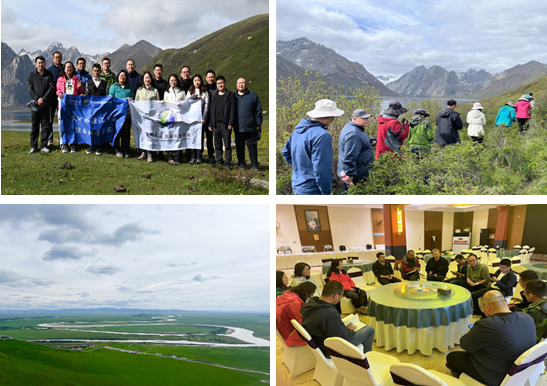
From June 22 to 23, Gou Xiaohua and his team conducted scientific investigations in Maqu County and Luqu County. Researcher Ma Weijing introduced the relevant information about the two counties and the scientific research conducted by Lanzhou University in these areas. In Maqu County, the team visited the Awancang Gongsai Kamudao Wetland, the Zaxitang Ecological Restoration Demonstration Site, the Yellow River Embankment Afforestation Project, the 200 MW Muguang Photovoltaic Power Station, and the Ruoergai Plateau Wetland Ecosystem Research Station's Maqu Alpine Grassland Observation Site. During the discussion meeting with the Maqu County government and related departments, Gou Xiaohua emphasized the significance of ecological protection in Maqu County for water conservation in the upstream Yellow River and its crucial role in the overall development of the basin. Addressing the ecological protection and regional development-related issues facing Maqu County, both parties expressed their intention to cooperate in the construction of field stations and internship bases. In Luqu County, the team visited the Bailong River Source Ecological Protection Site, the Ecological Restoration Site of Historical Mining in Caibao Mountain, the Gahai Town's "Ten Household Cooperative" Model for Pastoral Industry Reform, the ecological protection of Gahai Lake, the ecological tourism in Gaxiu Village, the restoration of the Hongkegou Sand and Gravel Quarry, and the County's Ecological Animal Husbandry Circular Economy Industrial Park. During the discussion meeting with the Luqu County government and related departments, Gou Xiaohua highlighted the prominent ecological strategic position of Luqu County as an important water source replenishment area in the upstream Yellow River. The region's distinctive characteristics and outstanding achievements in development were acknowledged. Gou Xiaohua recommended that Luqu County consolidate and further develop the achievements in ecological environmental protection and high-quality development in the Yellow River Basin. He urged the implementation of the requirements for ecological protection and high-quality development in the basin, aiming to achieve new results.
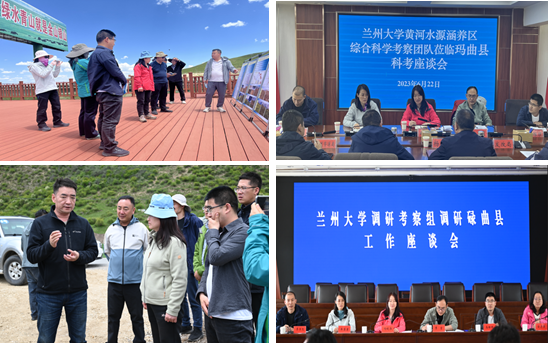
From June 24 to 25, Gou Xiaohua and his team visited the Gansu Tao River National Nature Reserve. The team conducted investigations at the Dayu, Qibusi, Ajiao Gou, and Boyu protection stations, visited the specimen museum, and watched a promotional video on ecological protection in Zhuoni County. They gained in-depth understanding of the abundant fauna and flora resources and the ecological conservation status of the entire region. In Dayu Gou, Associate Researcher Zhang Junzhou introduced the forest ecosystem of the Gannan Plateau and the related research conducted by Lanzhou University in the area. During the discussion meeting with the Tao River Nature Reserve Management Center, in-depth discussions were held on the direction of research collaboration. Detailed agreements were made regarding talent cultivation, as well as research collaborationdirections encompassing hydrology, ecology, geography, and other aspects. Both parties expressed their commitment to scientific research collaboration based on the principles of resource sharing, complementary advantages, win-win cooperation, and common development. They aimed to jointly apply for research projects, achieve mutual benefits, and truly transform the green mountains and clear waters into valuable assets, serving the local economy and advancing the ecological civilization construction of the reserve to a new level.
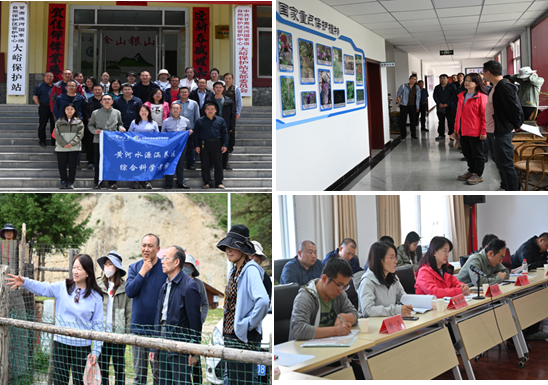
On June 26, after conducting a comprehensive scientific investigation of the ecological environment at the junction of the Liujiagou Yellow River and Tao River, Gou Xiaohua and his team arrived at the Liancheng Forest Ecosystem Field Scientific Observation Research Station of Lanzhou University. They conducted inspections of the nursery hydrological observation site, nursery control experimental field, Qixi Bridge hydrological observation site, and Quanwan observation site. Researcher Zhang Junzhou provided a detailed introduction to the establishment, scientific observations, and station operations at the field station. The team members provided valuable opinions and suggestions for the development of the field station.
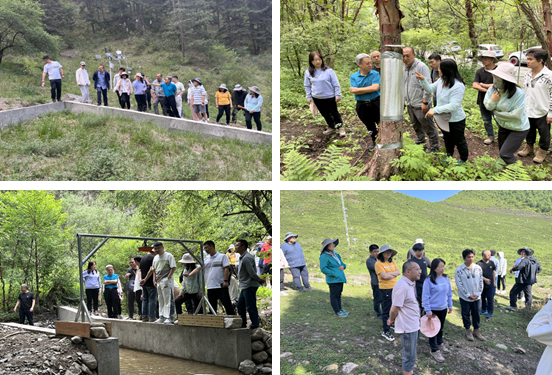
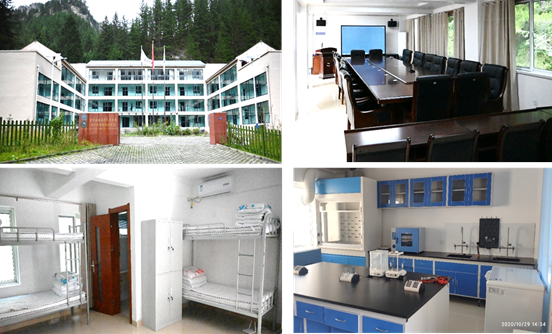
From June 27 to 29, the scientific expedition team held a three-day summary conference at the Liancheng Field Station. During the conference, team members shared their findings and reflections on the expedition, systematically summarized the achievements obtained, and engaged in in-depth discussions on future research directions, talent cultivation, and project applications. Gou Xiaohua expressed gratitude for the team members' excellent performance during the expedition and thanked the Institute of Plateau Science and Sustainable Development at Qinghai Normal University for their support. He emphasized the importance of refining scientific questions based on the expedition's findings, conducting further research oriented toward these questions, and building a high-level research team focused on the ecological protection and sustainable development of the Yellow River Basin. He encouraged strengthened communication with relevant local units and the translation of research findings into action on the land of our motherland. The team has completed the publication process of their monograph titled "Water and Carbon Processes and Human Activities in the Northeastern Tibetan Plateau of the Yellow River Basin," which is based on the previous work.
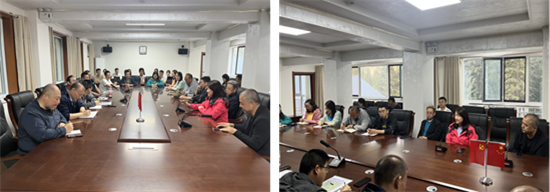
This scientific expedition received strong support from the Institute of Plateau Science and Sustainable Development at Qinghai Normal University. In addition to the members of the scientific expedition team, several faculty members and researchers from the College of Earth and Environmental Sciences at Lanzhou University participated in the expedition, including Professor Li Yu, Professor Mou Cuicui, Professor Wang Xuejia, Associate Researcher Zhang Junzhou, Associate Researcher Chen Yongle, Associate Researcher Ma Weijing, Associate Researcher Zhang Guofei, Associate Researcher Gao Linlin, Associate Professor Li Xingyuan, Dr. Yang Haijiang, and Mr. Li Yang. They were joined by Associate Professor Jin Yanxiang and Dr. Han Guangzhao from Qinghai Normal University, Researcher Peng Fei from the Northwest Institute of Eco-Environment and Resources of the Chinese Academy of Sciences, and Associate Professor Li Jingzhong from Xuchang University. Apart from the expedition team members, more than ten students from the College of Earth and Environmental Sciences at Lanzhou University, including Secretary Shi Zhaojun and Professor Zhang Baoqing, as well as Researcher Yang Mei from the Northwest Institute of Eco-Environment and Resources of the Chinese Academy of Sciences, actively participated in the expedition summary and subsequent work discussions at the Liancheng Field Station.